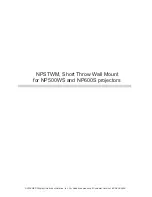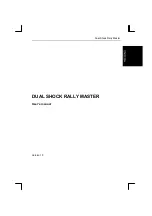
User's Guide ADI-8 DD © RME
11
6.5 Outputs ADAT Optical/TDIF
The ADI-8 DD provides two digital outputs, both in ADAT optical and TDIF-1 format. In normal
operation only the MAIN outputs are used. When using more than the first 4 channels at acti-
vated DS (Double Speed), the AUX outputs also have to be used.
TDIF and ADAT optical outputs always operate simultaneously and carry the same audio data.
As long as DS isn't activated MAIN and AUX also operate simultaneously and carry the same
audio data. With this it is possible to distribute the output signal to two devices of the same
format. When using all connectors the ADI-8 DD can feed up to 4 devices (2 x ADAT, 2 x
TDIF).
The ADAT optical outputs of the ADI-8 DD are fully compatible to all ADAT optical inputs. A
usual TOSLINK cable is sufficient for connection.
ADAT Main
Interface for the first or only device receiving an ADAT signal from the ADI-8 DD. Carries the
channels 1 to 8. When sending a Double Speed signal, this port carries the channels 1 to 4.
ADAT AUX
Copy of the data at the MAIN output. When sending a Double Speed signal, this port carries
the channels 5 to 8. When AES STATE OPT is selected, ADAT AUX is used from the right part
of the ADI-8 DD to send channels 1/2 in SPDIF format
The TDIF-1 connectors of the ADI-8 DD are fully compatible to all devices with such an inter-
face, for example DA-38 and DA-88. The connection is done through a special TDIF cable,
available at your local dealer (Tascam part number PW-88D).
TDIF Main
Interface for the first or only device with a TDIF-1 interface. Carries the channels 1 to 8. When
transmitting a Double Speed signal, this port carries the channels 1 to 4.
TDIF AUX
Copy of the data at the MAIN interface. Carries the channels 5 to 8 in Bit Split or Double Speed
mode.
General hints on TDIF operation
TDIF and word clock
When the ADI-8 DD is slave no additional word clock connection is necessary. In case DA88
and/or DA38 are slave the word clock output of the ADI-8 DD has to be connected to the word
clock input of the first (master) recorder. When using more than one recorder a special sync
cable (Tascam part number PW-88S) is needed.
Emphasis
The AES/EBU and TDIF interface of the ADI-8 DD support Emphasis. Please note that an Em-
phasis indication will not be stored or processed on the sound when doing digital transfers be-
tween AES/EBU or TDIF and ADAT, because the ADAT standard does not include Emphasis.












































